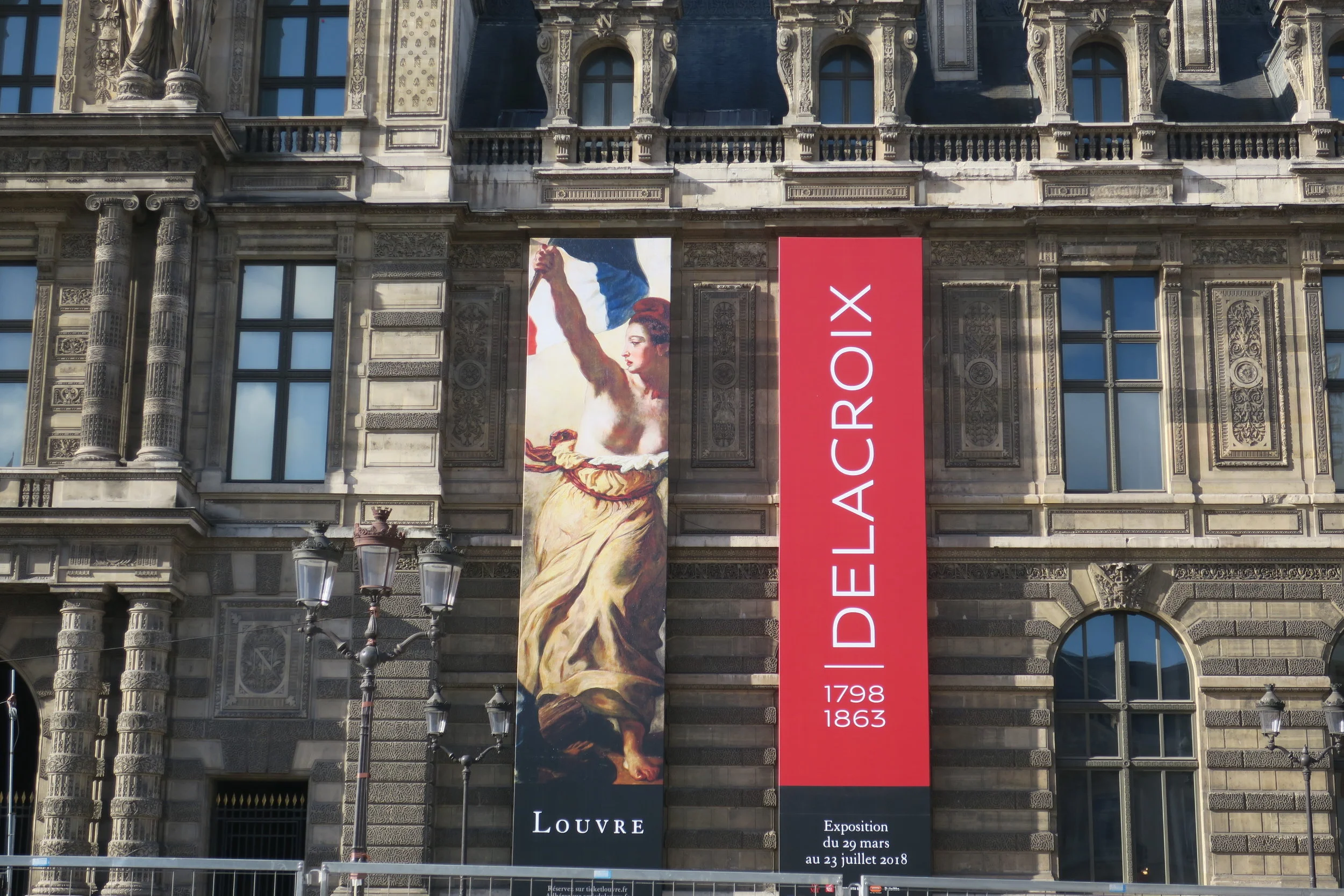French artist Eugène Delacroix was the leader of the Romanticism movement of the late 18th and first half of the 19th century. Born in 1798 outside of Paris and an oprhan by the time he reached 16 years old, he found his way to art by the age of 18. Learning at the hand of Pierre-Narcisse Guérin, his fellow classmate was Theodore Gericault, who would have an influence on Delacroix's paintings.
Self portrait- GIlet Vert 1837
Through the 23 of July the Musée du Louvre has the most amazing exhibition dedicated to Delacroix. It is the largest collection of his works in one place since 1963 in partnership with the Metropolitan Museum of Art and the Musée Eugène Delacroix. It includes some of his best known works, and one of my very favorite paintings but also his sketchbooks, diaries, working sketches he completed for some of his grandest works and a few pieces rarely seen.
Le 28 Juillet 1830 La Liberte Guidant le Peuple 1830
Arguably his most recognized painting is Liberty Leading the People painted in 1830 for the Salon of 1831. Although today is the eve of la Fête Nationale that falls on the anniversary of the Revolution of 1789, this painting commemorates the Paris uprising of 1830, know as the Trois Glorieuses, (Three Glorious Days) that ousted King Charles X. Liberty is the focal point of the painting, an allegorical figure rich with Greek imagery. Her bare breasts signifies the birth of democracy and her free flowing dress that conveys her movement as she climbs over the cobblestone barricades calling for all to stand up and fight inculuding the school boy.
Exhibited at the Salon of 1831 it was purchased by the French state the same year to be hung in the Musée du Luxembourg, but was returned to Delacroix in 1839 as the theme was deemed to controversial. By 1848 King Louis-Philippe was the next to go and the painting returned, eventually making it to the Louvre in 1871 where it hangs to this day. I could talk about this painting and describe it for days, but there is much more to Delacroix and this exhibit.
sketch of Apollon Vainqueur du Serpent Python
One of the most beautiful galleries in the Louvre may be where you can find some of the crown jewels of France, but the the real beauty comes when you tilt your head up. The ceiling of the Galerie d'Apollon was painted by Delacroix. As a artist he loved to spend his days strolling through the Louvre and dreamed of one day seeing his work hanging with the historic walls. At the time an artist would only make it into the Louvre after they had been dead for 10 years. But Delacroix found another way in, when Felix Duban was restoring the famed gallery in the style of Louis XIV, thus the nod to Apollo. He was one of the few artists to live to see his work hanging in the Louvre
Jeune Orpheline au Cimetiere 1824
Young Girl at the Cemetery painted in 1824, shows Delacroix's affection of Peter Paul Rubens. The sadness, fear and despair she shows on her face and her eyes glossy with tears, is incredibly moving. When you notice that she is in a cemetery and her great sense of loss as she looks upward for an answer. It constantly amazes me that one person can create that feeling with nothing more than a brush and paint.
The exhibition is amazing and I spent over 3 hours taking in every detail and reading every word, it is a must see if you are in Paris in July. After that you can still see many of his works within the Musée du Louvre and also the Musée Eugène Delacroix that is a short walk away. And as a bonus if you go to the Louvre first, hang onto your ticket as it gets you into the Delacroix museum for free within 48 hours.





